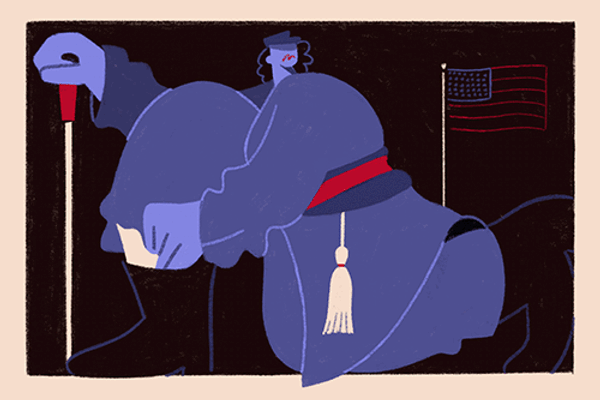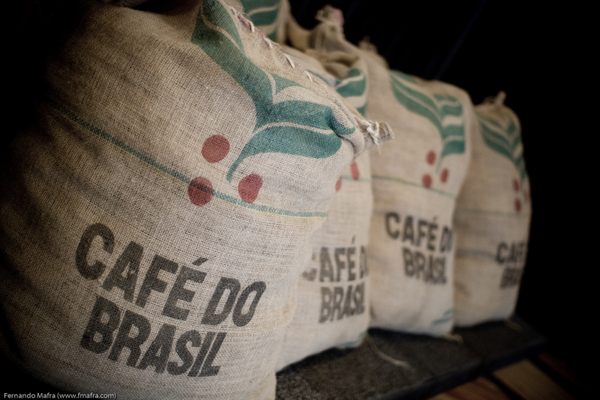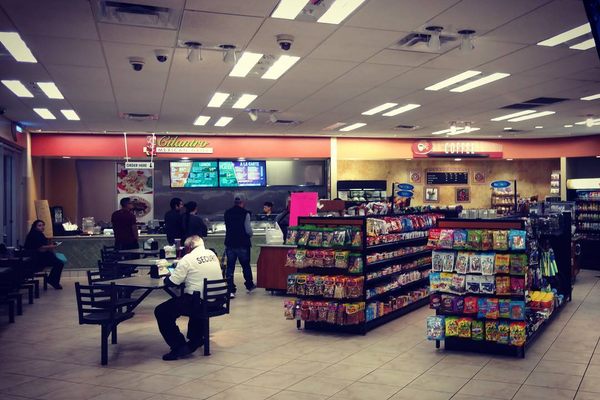Long before the rise of the Roman Empire, the Mayans were carving roads and erecting massive stone edifices on the Yucatán Peninsula. Somewhere between 1500 and 1200 BC, Mesoamerican people discovered nixtamalization, or boiling dried corn kernels in alkaline water with calcium hydroxide derived from ash. The process rendered corn far more digestible, unlocking previously unobtainable nutrients and creating a foodstuff that fueled empires. By 1000 BC, dough made from nixtamalized corn was being formed into tamales and other staples.
“It was very difficult to tell the story of corn in such a small space, so it had to be small and mighty,” says Ximena Martin, a director at the LA Plaza de Cultura y Artes. Telling the gastronomic history of a country is never easy, but it’s particularly challenging when it is as ancient and complex as that of Mexico’s. Yet LA Plaza Cocina, an extension of LA Plaza de Cultura y Artes, which opened in February in Los Angeles, seeks to do just that, often by combining various mediums and methods. In the near future, the full onsite kitchen will be home to everything from cooking classes to mezcal tastings.
“Every class is going to have some cultural history behind it,” Martin says. While chefs such as Carlos Salgado of Taco María will helm some classes, Martin is excited to pass the mic to home cooks as well. “This is about where it comes from, with opportunities for oral history and storytelling.”

Maize: Past, Present and Future, LA Plaza Cocina’s inaugural exhibition currently on display, is the product of years of thought on the part of its co-curators, Martin and Maite Gomez-Rejón, who is the creator of ArtBites and a food historian and writer. “Corn is the life source of the Americas and essential to the origin story of Mexico,” Gómez-Rejón says. “If you look at myths in the Mayan book of creation, the humans were molded out of masa. A child’s umbilical cord was cut over a piece of corn. Masa was placed in the mouths of those who had died.”

Some of the objects at the core of the exhibition, including a statue of a Zapotec corn deity on loan from a collector, are more than 2,000 years old. A number of the artifacts, such as a molcajete, a mortar traditionally carved from volcanic stone, a metate, used for grinding masa, and a pichancha, or colander made of red earth clay, show the ancient history of corn, while photographs showcase its present. All of the images, which were captured by Noah Forbes and Molly DeCoudreaux, were donated by Masienda, a US-based organization that sources heirloom corn from small, sustainable farms in Mexico.

One small artifact that speaks volumes is Nuevo Cocinero Mexicano: en Forma de Diccionario, published in 1883 and one of the oldest known cookbooks on Mexican food. While the recipes themselves are interesting, what stands out most to Gómez-Rejón is what is missing. “There’s hardly a mention of corn,” she says. Although a few tamales make an appearance, the only reference to a “tortilla” is the Spanish potato omelet.
“It’s seeing how attitudes towards corn changed in the 16th-century context,” Gómez-Rejón says. “The conquerors equated this corn, which had this amazing history and gods and goddesses, they immediately compared it to their eucharistic wheat and suppressed its cultivation. So this crop that had been celebrated and venerated for thousands of years was relegated to the fringes of society and seen as inferior.”

That began to shift towards the end of the 1800s and early 1900s. By the start of the Mexican Revolution in 1910, there was a renewed sense of pride in the nation’s precolonial history and heritage. “Attitudes really begin changing, especially towards the time of the revolution as Mexicans are rediscovering their Indigenous roots,” Gómez-Rejón says. That shift towards reclaiming maize is reflected in a number of later cookbooks in the exhibit.
But Maize: Past, Present and Future outlines another, more recent threat to this heritage: Under the North American Free Trade Agreement (NAFTA), about 40 percent of the corn grown in the United States is exported to Mexico, accounting for 96 percent of Mexico’s corn imports. Corn is by far the most heavily subsidized American agricultural crop and U.S. lawmakers have long pressured Mexico to help keep the industry afloat by taking billions of dollars of mostly GMO corn off the market. Although Mexico pushed back in 2021, vowing to eliminate genetically modified corn from its supply, the trade imbalance has significantly impacted the quality and biodiversity of corn available in Mexico.

Part of the mission of LA Plaza Cocina’s debut exhibition is to showcase the work of people helping to restore Mexican corn’s biodiversity through presentations and visual media. “So there’s so many people approaching this in different ways,” Gómez-Rejón says. “I hope that this will lead to changes so that the land can be allowed to continue to feed as many generations as it has up until this point.”
While corn’s importance to Mexico, past and present, made it a natural fit for LA Plaza Cocina’s first exhibit, future exhibitions will highlight the history of cacao, as well the voices of grandmothers, ranging from Indigenous women living in Mexico to Mexican-American women who are part of the diaspora. Most importantly, Gómez-Rejón and Martin want to make the space as inclusive as possible. Entrance is free to all, exhibitions will be made digitally available online, and cooking classes and events will be kept at community-friendly prices.
“Just the fact that there’s a museum to this, to help show people that Mexican food is not just a taco on the street, means so much,” Gómez-Rejón says. “And even that, we can deconstruct that and it tells such a deep, deep story. A simple corn tortilla is so full of history.”
Gastro Obscura covers the world’s most wondrous food and drink.
Sign up for our regular newsletter.

















































Follow us on Twitter to get the latest on the world's hidden wonders.
Like us on Facebook to get the latest on the world's hidden wonders.
Follow us on Twitter Like us on Facebook